
The seven best Hong Kong restaurants for xiaolongbao, Shanghainese steamed pork dumplings
Our quest for the juiciest, best seasoned, most flavourful Shanghainese steamed pork dumplings takes us from a tiny place in Tai Kok Tsui to some of the biggest chain restaurants
Xiaolongbao could easily be mistaken for Cantonese dim sum, but the steamed pork dumplings, typically served in Shanghainese restaurants, are something completely different. Bite into the dainty looking packages and the concentrated juices from the pork explode satisfyingly in the mouth.
There are two theories concerning the origin of xiaolongbao. One has it that a restaurateur from Shanghai’s Nanxiang district called Huang Mingxian invented the dumpling in the 1870s by adding aspic to the pork. The other is that China’s Emperor Qianlong (1711-1799) was served the dumplings when he travelled through Wuxi in Jiangsu province. He enjoyed them so much that they became widely popular.
Although the word “long” in xialongbao means “basket”, some say it originally meant “dragon”, in honour of the emperor, because the two words are homonyms.
It’s a tricky dumpling to make. The pork needs the right balance of meat and fat to form a fragrant soup inside when it’s steamed. To tie it all together, the wheat flour wrapper should be thin, but firm enough to hold the filling without it all falling apart in an unholy mess.
Chinese American celebrity chef Ken Hom says he is partial to the xiaolongbao served at Din Tai Fung in Taipei, which is credited with making the tasty bites a global food phenomenon.
“Great dumplings should be juicy, with flavourful fillings and light, thin dough,” he says. He adds that they ought also to be well seasoned, with the savoury pork filling wrapped in the thin skin before the little parcels are gently steamed in bamboo racks.
Taste buds tingling with anticipation, we embarked on a mission to see if “small basket dumplings” in Hong Kong restaurants would meet Hom’s exacting standards. Our selection was narrowed down to seven reputable candidates, four on Hong Kong Island and three in Kowloon, ranging from budget to expensive. Here’s how they fared, ranked in ascending order:

7. Paradise Dynasty
This Singapore-based restaurant chain prides itself on innovative cuisine, and its dumplings are a signature dish. The speciality dynasty xiaolongbao (HK$98 for eight) are served in a large steamer basket. They are a riot of colour and these buns are hardly ordinary in flavour. The green bao is laced with ginseng; truffle infuses the black one, and fuchsia warns of a spicy Sichuan kick.
One is an original-style pork dumpling, and we liked the combination of meatiness and thin skin. It is beautifully wrapped, with 18 folds, and the top is shaped like a mini crown that’s quite thick. Dipped in the chinkiang vinegar, there’s a satisfying balance.
The same could not be said of the more exotic tastes, which are more gimmick than substance. Although the crab roe bao was passable, the rest, particularly garlic (brown), foie gras (orange) and cheese (yellow) left a peculiar taste in our mouths. Not even endless cups of tea could wash away the jarring flavours.
Paradise Dynasty should stick to the original recipe.
6/F, Lee Theatre, 99 Percival Street, Causeway Bay, tel: 2177 0903
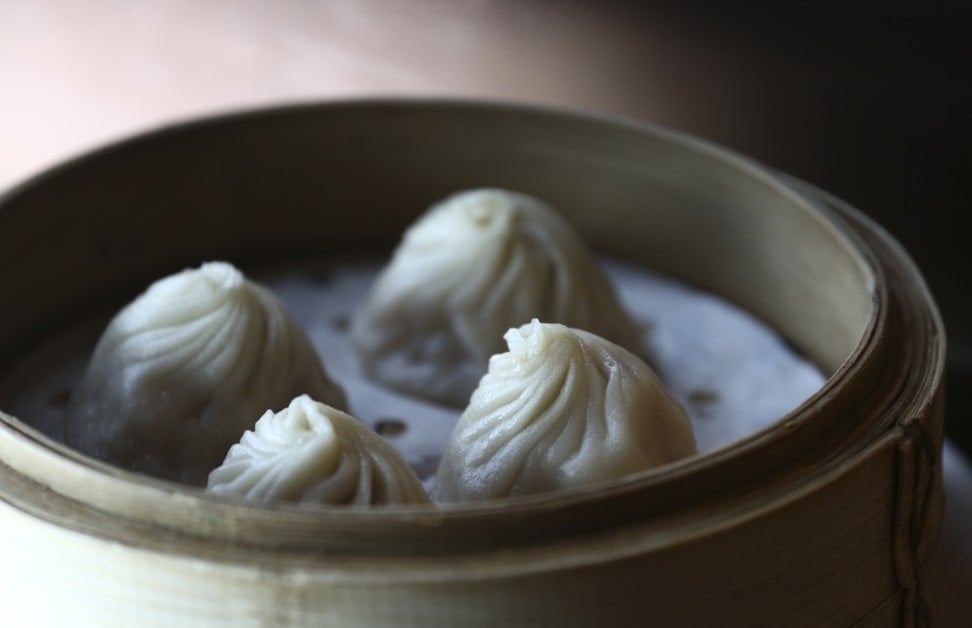
6. Crystal Jade
This restaurant is known for consistency and quality. Turn up early or you will be stuck with a ticket, hoping your number will be called – just like a lottery.
We’ve eaten xiaolongbao (HK$39 for four) here before and had no complaints – until this time. Biting into one of the buns, teeth met bone. Not cool.
The other three were fine, the wrappers pretty thin, the folds very delicate and forming a wavy swirl at the top. The filling is very meaty, with lots of soup, and the vinegar is quite dark and very tart. We enjoyed the side dish, pickled cucumbers, even more.
Shop 3328, Gateway Arcade, Harbour City, 17 Canton Road, Tsim Sha Tsui, tel: 2622 2699
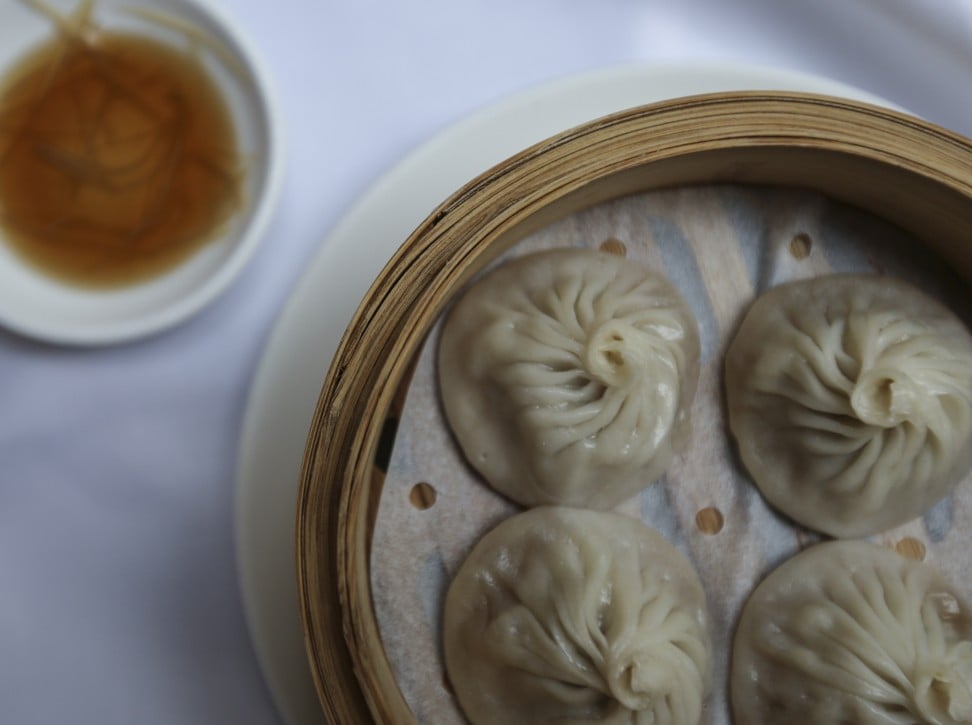
5. Xia Fei Society
This is an unassuming place at the foot of Lan Kwai Fong in Central. Lunchtime is busy, with tables covered in steamer baskets of food, but we were only interested in one thing.
The xiaolongbao (HK$60 for four) arrive steaming hot, and if they’re not picked up carefully with the chopsticks, they will fall apart. That’s because the bottom of the wrapper seems much thinner than the top. Overall, however, we were impressed with how thin the wrapper was, so much so it was semi-transparent and we could see the broth gathered at the bottom.
We later asked the restaurant how the xiaolongbao are made. It’s minced pork with the “soup jelly” made from a broth of pork and pork rind. The wrapper has 18 folds and the bao is steamed for 10 minutes.
The vinegar served here is lighter than at most places, a rice vinegar from Shanghai that is quite flavourful without tasting too strong.
4/F, Century Square, 1-13 D’Aguilar Street, Central, tel: 2522 7611

4. Hing Noodle
This is a great choice for quality food at budget prices. When we arrived there was a queue outside the small restaurant, which seats fewer than 25 people. Although it is known for noodles, the steamed dumplings are also not to be missed.
The xiaolongbao (HK$36 for four) are smaller than most but are flavourful without being greasy. The wrapper is much whiter than elsewhere and has a consistent thinness.
Owner Noby Ku Chi-kit learned the art of making xiaolongbao working for various restaurant chains, including Crystal Jade, before opening his own restaurant in 2015.
He doesn’t add pork seasoning to the filling, as do most restaurants, and he prepares the fillings the night before so the meat is denser and has been marinated for longer.
Hing Noodle begins wrapping the dumplings as orders come in, which makes it quite challenging for kitchen staff. Ku says it’s the only way to guarantee the freshest xiaolongbao.
Shop 2J Kok Cheung Street, Tai Kok Tsui, tel: 2609 0966
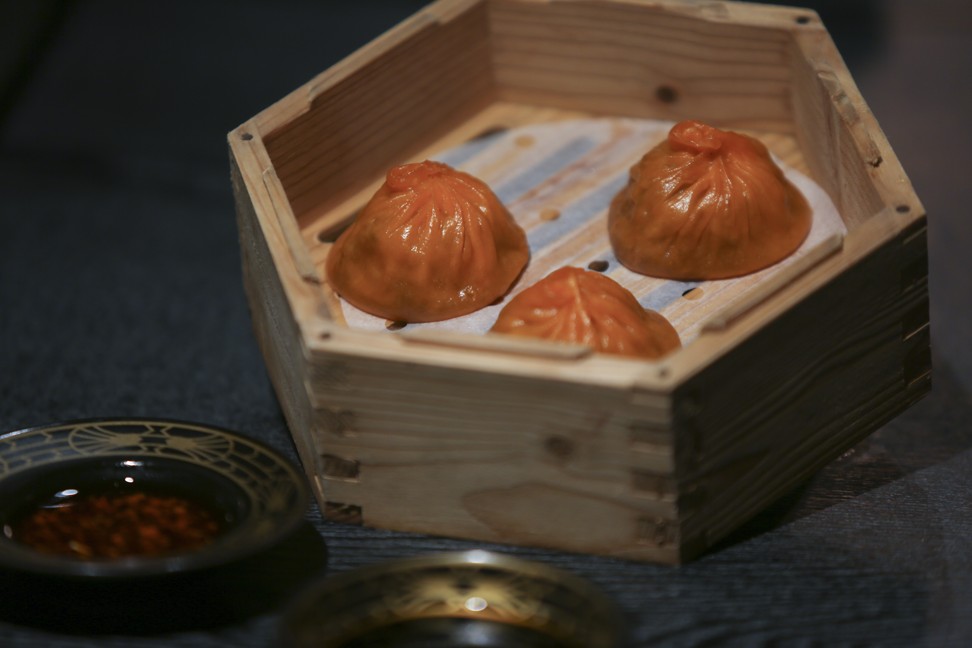
3. Dim Sum Library
The xiaolongbao at this oddly named place are in a category of their own. Dim Sum Library opened only in January 2017 and stars dim sum master chef Leung Kok-wah, who has been creating some new dim sum dishes. Leung formerly worked at Man Wah in the Mandarin Oriental Hong Kong, Cuisine Cuisine and Ming Garden.
Leung truly illustrates how it’s possible to put a new spin on a traditional dish and raise the bar. The intriguing dan dan xiaolongbao (HK$48 for three) arrive in a small steamer basket, and the wrapper is yellow-orange. There’s no need to dip this spicy bao in vinegar. Once the dumpling is bitten into, the spiciness envelopes the mouth – not too overpowering, but hardly subtle, either.
The wrapper is very thin, too, making this bao even more impressive. The dish is well executed, with a balance and production quality that are hard to fault.
These were among the most expensive xiaolongbao we sampled, but an innovative dish that’s worth the price.
Shop 124, 1/F, Pacific Place, 88 Queensway, Admiralty, tel: 3643 0088
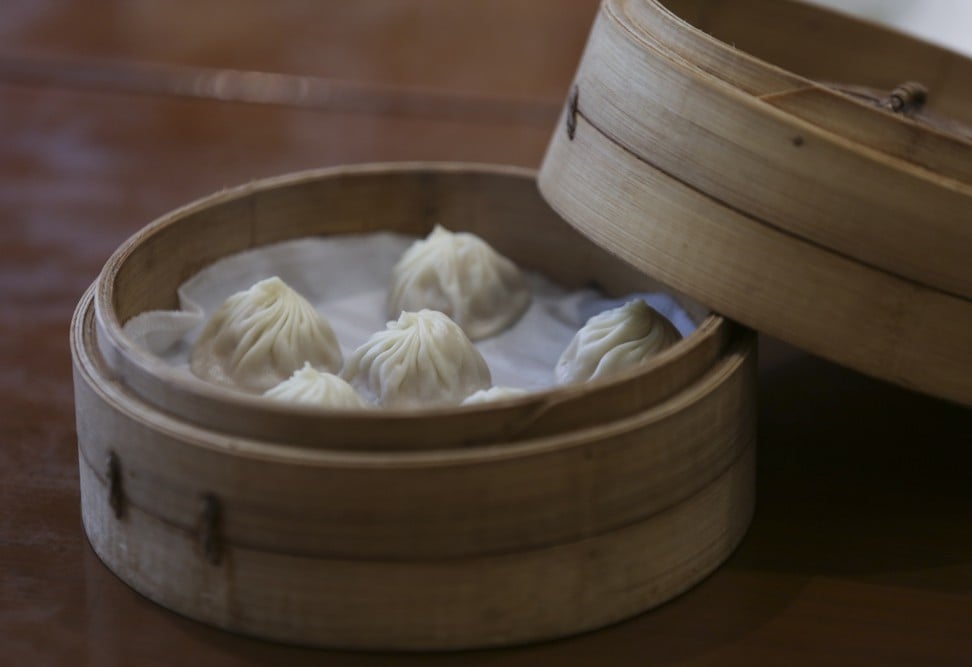
2. Din Tai Fung
Like Crystal Jade, Din Tai Fung dishes up some of the most consistent xiaolongbao around. The dumplings are precision-made. Chefs, in baseball caps and white uniforms, periodically place fillings and completed dumplings on scales to ensure the weights are spot on.
The restaurant opens at 11.30am, but hungry customers are usually already hovering at the entrance. Before the doors open, receptionists hand out menus and order forms for diners to tick off the dishes of their choice. We know what we want.
Soon after we sit down the fresh steamed pork dumplings (HK$60 for six) arrive and they’re steaming hot.
When we get ready to dip them into the vinegar we’re surprised to find that the usual dark vinegar has been changed to a golden one that doesn’t have as much taste. Xiaolongbao need a heavier flavour to match the meaty taste, so this new vinegar is a weak complement.
For contrast we try the steamed chicken dumplings (HK$62 for six). Although the meat is tender, it’s awfully bland. Perhaps it’s a healthier version of steamed dumplings, but certainly no substitute for pork.
G3-11, 68 Yee Wo Street, Causeway Bay, tel: 3160 8998
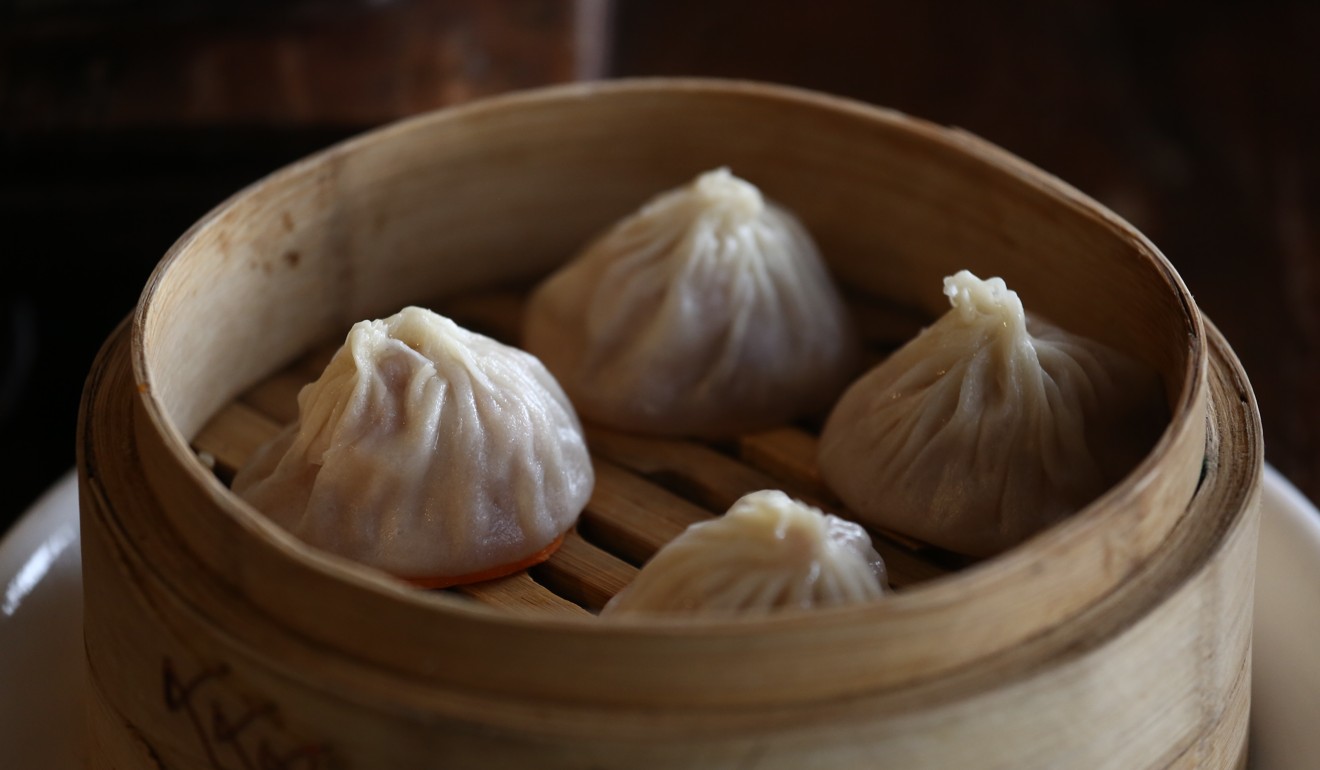
1. Ye Shanghai
We arrive before the lunchtime rush hour and score a seat in this beautiful old-school-looking restaurant. The xiaolongbao (HK$52 for four) take a while to arrive, presumably because they are made fresh.
They look quite plump and large, and the wrapping is very thin. There is a fine slice of carrot at the bottom of each bao, forming a firm base that helps prevent them from bursting and spilling the soup. The filling is very juicy, making this combination arguably the best so far. Plus, while the vinegar is dark, these dumplings also contain finely minced ginger that adds a subtle, spicy taste and texture to the dish.
6/F, Marco Polo Hongkong Hotel, 3 Canton Road, Tsim Sha Tsui, tel: 2376 3322


